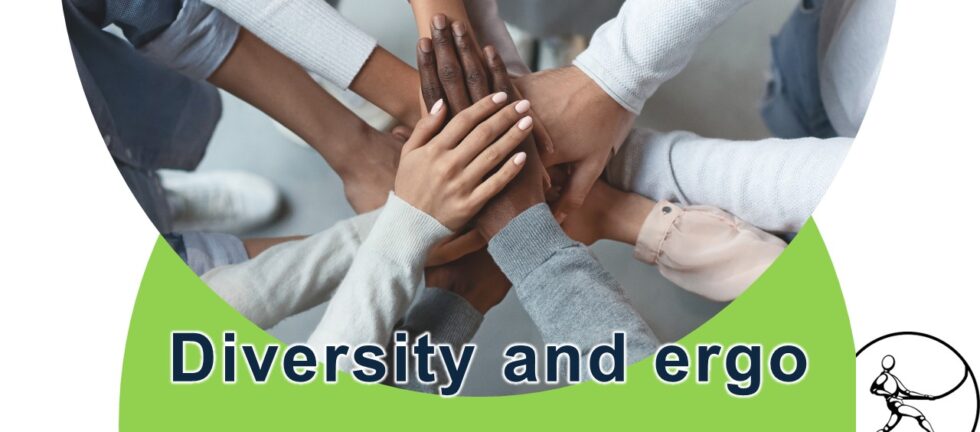How can HR professionals ensure that ergonomics solutions accommodate the diverse needs of employees with varying abilities and preferences? We have been hearing a lot recently about DEI (Diversity, Equity, and Inclusion); how does this initiative relate to ergonomics?
In ergonomics, we try to fit the work or task to the worker.
- Diversity is all about considering unique attributes and talents, regardless of gender, race, age or sexual orientation.
- Equity is ensuring all employees are treated fairly and justly and ensure equal opportunity.
- Inclusion refers to creating an environment where all employees feel valued, respected, and fully integrated into the organization’s culture and operations.
Accommodation is the link that ties ergonomics and DEI.
Consider this example:
An employer determines that safety gloves are required for a new task, and provides a “One size fits all” option to optimize cost.
What are the impacts of this decision, considering ergonomics and DEI?
Diversity:
The diverse anthropometry (body size) of the workers using the gloves has not been considered. Hand size and shape vary. The small worker will work using gloves that are too big, and the large worker’s gloves will be too small. In either case, the workers may not be protected from the hazard. These workers will be uncomfortable, and potentially less effective at the job.
Equity:
Workers may feel less valued by the organization when they realize that a decision favoured the “average” worker and ignored the needs of the large and small. Employees who do not feel valued might not do their best work, might cast around for other employment opportunities, and are more likely to take time away from work.
Inclusion:
The poor inclusivity demonstrated in this example may cause workers to feel “excluded” from their organization due to the manager not considering buying gloves to accommodate all workers. Some organizations might decide that, since they only have gloves in one size, workers who do not fit the gloves should not perform that task. These workers are now excluded from some opportunities. This might not seem like a big deal if it’s only one task, but this approach might creep into many decisions, and eventually many jobs can only be done by certain individuals. This creates morale issues, naturally, but also scheduling, skill, and production issues.
People make decisions that impact DEI every day. The glove example is one, but consider how we design a work bench, the unit size for our salt order (10 kg bags? 20 kg bags? 40 kg bags?), and the height of top shelf. An ergonomist can help to ensure that these decisions accommodate as many people as possible.
So, how do we ensure that ergonomics solutions promote DEI? Here are 3 examples (among many!):
Involve workers:
Before a change is implemented that impacts a workstation or task, seek feedback from workers about what they like about the current job, and what could be changed to better fit their needs.
Complete ergonomics (MSD risk) assessments:
Understanding the hazards in a job allows you to understand whether the job accommodates your entire worker population. The risk assessment identifies where body size or strength capabilities limit the way the job or task is done, and results in recommendations for changes that accommodate more workers. We can also help you to accommodate specific workers. Ergonomics assessments permit diversity, foster inclusiveness, and create equity amongst workers. Ergonomists haven’t been talking about DEI until recently, but we’ve been applying its principles for decades.
Create coaching plans:
Encourage new employees to use “best practices” or “ergonomic work techniques”. Best practice studies gather tips and tricks used by experienced and disadvantaged workers, allowing these ergonomic work practices can be passed on to new workers. The coaching plans show, step by step, how to teach new workers to use these practices. Ensuring that tips are communicated amongst workers fosters diversity (more people can do the task safely), equity (everyone benefits from the experience of the most senior employees), and inclusion (no one is left out).
DEI and ergonomics go hand-in-hand, and both should be included in your company’s policies and procedures for continuous improvement. Let us know how we can help.


